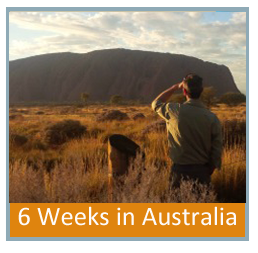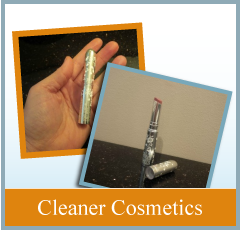*** Important: If you are thinking about suicide or experiencing a crisis right now, don’t wait: Call 9-1-1 or go to your nearest hospital emergency room. There are professionals available who can give you immediate help. ***
I’ve been deeply moved by the recent movement “It gets better.”
In response to some recent high-profile teen suicides, Dan Savage, a well-known writer and openly gay man, sparked a tremendous viral video campaign in the hopes of preventing gay and lesbian teens from choosing suicide. Understanding the deep despair that can come from isolation, taunting and outright homophobia, Savage reaches out to tell teens that “it gets better” — life after high school can be good, fulfilling, and very happy.
Savage and his partner’s “It gets better” video has inspired countless others to do the same. Now, any teen facing turmoil related to sexual identity can see and hear the stories of hundred of others who’ve been there. It is a clear societal plea to wait — don’t end your life — it gets better. You will find the life you deserve.
Naturally, the videos are not a fix to the larger issue of discrimination against gay, lesbian, bisexual and transgendered teens and adults. But they are speaking out loud about something our society rarely speaks of: suicide.
Suicide: can we talk about it?
It’s not that I blame people for not talking openly about suicide. I understand it’s hard. Right now, I am fumbling for words, hoping that I am not saying something “wrong.”
But surely, if we as a society have successfully learned to talk about safe sex and HIV, we can learn to talk about mental health and suicide. An article in the Ottawa Citizen, although dated now (2002), makes this point clear with numbers: “For over 23 years widespread media and professional attention concentrated on 12,500 AIDS deaths, compared to little concern with 92,000 suicides.”
Like most other hard topics — serious illness in children, the death of a child, miscarriage, addiction, mental illness — the silence can often be one of the most difficult parts for the person and their loved ones. Those three simple words — it gets better — may not seem like much. But they can be start. They can provide a tiny glimpse that there could be light at the end of a very deep and suffocating tunnel.
If you’ve never been to that pit of darkness that a major depressive episode can take you to, then the notion of taking your life might seem utterly unthinkable. So unthinkable that, as a society, we’ve stigmatized those affected by suicide ideation and those who’ve loved someone who has committed suicide.
Let’s try and talk more about it. Not about the act of suicide, but about suicide prevention.
Suicide takes a heavy toll
Recent media attention has focused on the suicide of teens that were bullyied in relation to gender identity, but the cold hard fact is this, according to the Canadian Mental Health Association (emphasis mine):
In Canada, suicide is the second highest cause of death for youth aged 10-24.
The impact of suicide on a family is incredibly deep and can affect many generations. The statistics tell us that males commit suicide at far greater rates than females, which might explain why slurrs around suicide often debase it as an “unmanly” act — “selfish,” or “weak.”
These words certainly won’t prevent someone in despair from taking their own life. We need much better words to talk about suicide in an open and frank manner because it’s enacting a heavy toll on our society. Just consider:
“Men commit suicide at a rate four times higher than that of women. According to a report by the Canadian Institute for Health Information (CIHI), more men in Ontario committed suicide in the past 10 years than died in car crashes.” source
And, according to the World Health Organization (WHO), while you have been reading this post, someone in the world has committed suicide. Because every 40 seconds, another life is lost.
Sadly, I think the person I’ve known to talk about suicide most frankly was the woman who shared my hospital room in a maternity ward. A few hours after I had delivered my son, she had delivered a daughter. While my son looked like a huge, bouncing baby, her daughter — at almost half his size — looked tiny and vulnerable. And so did she. Her partner, the baby’s father, had committed suicide while she was in her first trimester.
But what can we do?
This is a tough one …. but I think that talking more openly about suicide and its connection to mental health is a good start. Perhaps it could help deflate the stigma that someone in our family, workplace or school may be feeling.
While countless families and loved ones did not have the advantage of being shown warning signs, we can try to keep ourselves open to the following warning signs, as identified by the Canadian Mental Health Association, in case someone we know shares them with us:
Some warning signs that a person may be suicidal include:
- repeated expressions of hopelessness, helplessness, or desperation,
- behaviour that is out of character, such as recklessness in someone who is normally careful,
- signs of depression – sleeplessness, social withdrawal, loss of appetite, loss of interest in usual activities,
- a sudden and unexpected change to a cheerful attitude,
- giving away prized possessions to friends and family,
- making a will, taking out insurance, or other preparations for death, such as telling final wishes to someone close,
- making remarks related to death and dying, or an expressed intent to commit suicide. An expressed intent to commit suicide should always be taken very seriously.
It gets better
While the campaign’s message that “It gets better,” is no doubt true to the core, one doesn’t need to wait alone until it does. I think it’s awful to imagine a young person suffering in silence throughout four years of high school (for an adult, four years may seem like no big deal, but for a young person, it might be an eternity).
I’m not advocating that people need to shout from the rooftops about their own personal despair. Everyone still has a right to their own boundaries, whether they be broad or narrow. But we can encourage one another to talk to someone of trust. And if a person feels unable to speak to someone he or she knows, let’s ensure that information is readily available for crisis and support services — as readily available as condoms now are.
Sure, it gets better. But maybe we can help it get better sooner than later.
For more resources and information on suicide: Canadian Children’s Rights Council, The Canadian Mental Health Association, Crisis Support Services in Ontario, and in the United States Mental Health America, National Institute of Mental Health (USA), and for my Australian readers SANE Australia.
- What do you think … is there anything we can do to help lower the rates of suicide in our own country? Our own city or town? Perhaps even our own school or workplace?
- How has the “It gets better” campaign affected you?
- The term “bullying” is used a lot these days. Do you think that we bully more as a society now than we did before? Is there a difference between teasing and bullying?
















Speak Your Mind